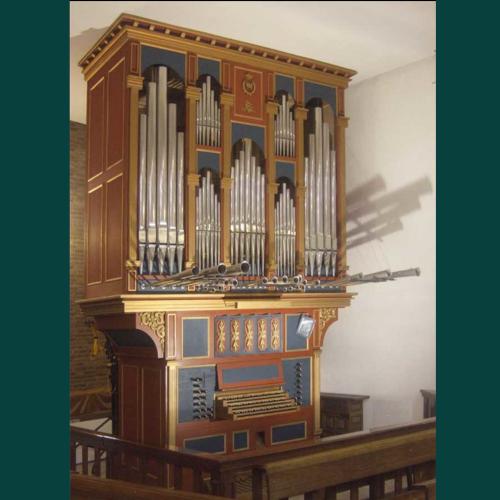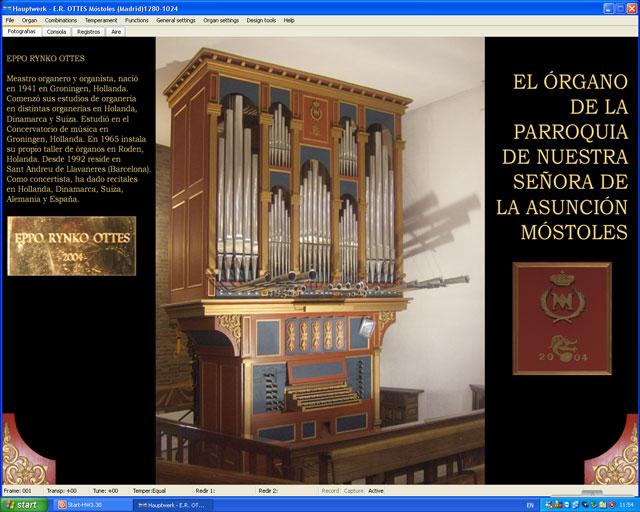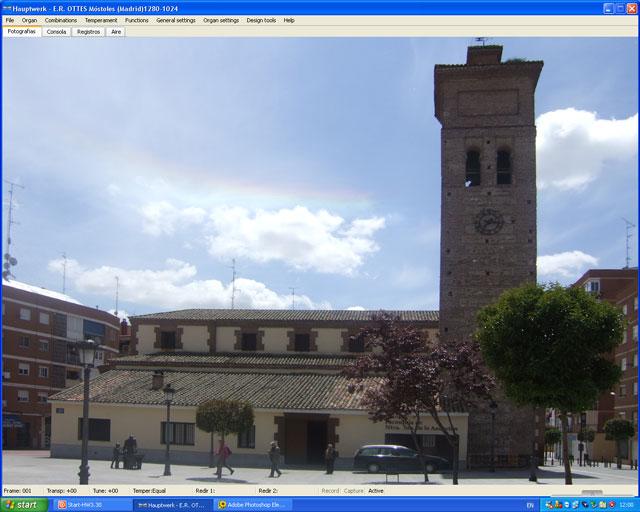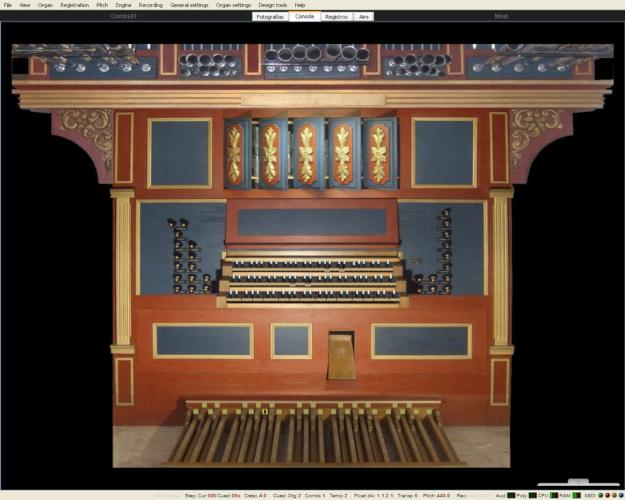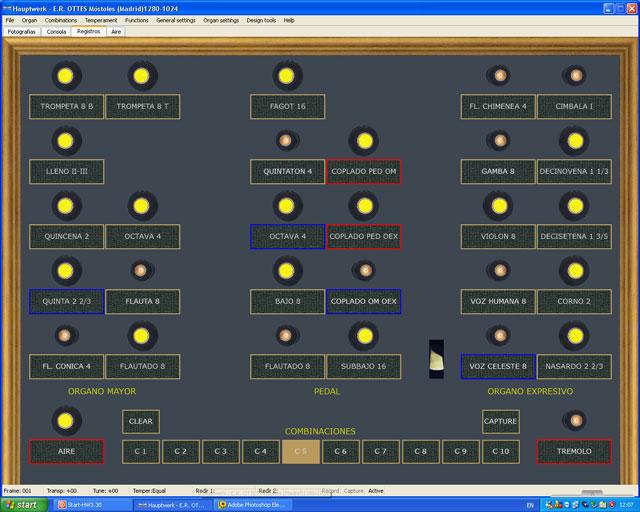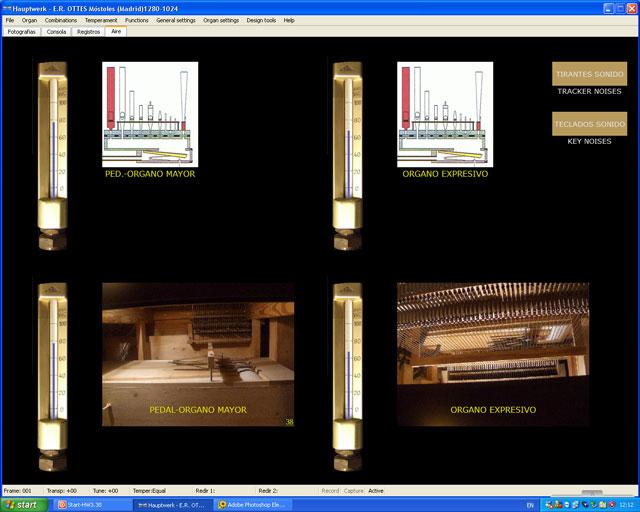Ottes Móstoles
€
129,-
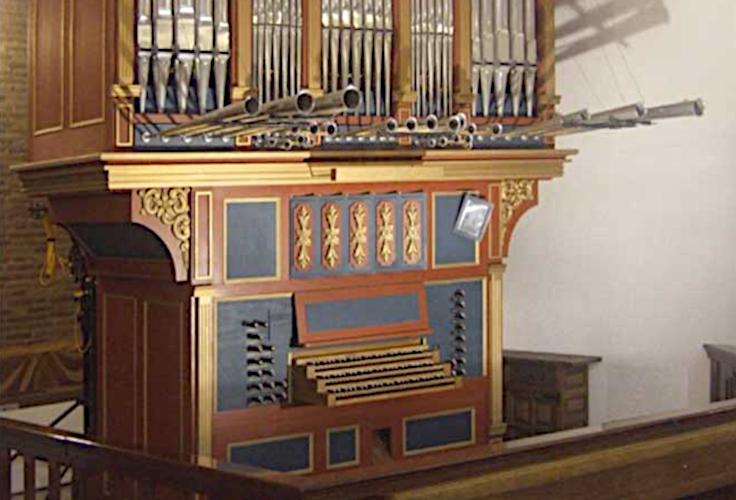
Built in 2004 by Eppo Rynke Ottes (1941-5-8 - 2021-4-20)
According to the chronicler Luis Zapata (1526-1595) the church in
Móstoles already possessed an organ "the great organ in Móstoles has
21 different stops such as flutes, regals, trumpets, a cornet, a
nightingale and tremulants."
In 1550, Phillip II along with the bishop visited the organ in
Móstoles and declared it to be "the most beautiful in his kingdom."
The sound especially impressed him.
In 1640 the mayor of Alcorcon wrote "the organs in Móstoles function
perfectly."
The organ built in 1777 had deteriorated badly by 1816. The instrument
was out of tune and essentially unplayable. It was repaired by Ramon
Sanchez in 1895 who replaced around 60 missing pipes with new ones.
After that, not much is known about the fate of this beautiful
instrument. The old organ was likely lost in 1936 during the Spanish
civil war.
With respect to form, the new organ is adapted to the current, rebuilt
interior. The organ case has been treated by the
tempera technique,
and profiles are gilded.
The decorations are in part derived from the altar and offering table.
The organ has 21 stops as did the instrument from around 1550.
The organ is built in the classical style and is equipped with
mechanical key and stop action.
The organ case is of solid wood with panels and the wind chest is made
of solid oak.
The wind system consists of a wedge-bellows for Great and Pedal and a
small hanging wedge-bellows with tremulant for the Brustwerk (Organo
Expresivo).
Metal pipe work has a composition of 60% tin to prevent large tuning
excursions during temperature changes; in addition the pipes are cut
to length.
Stopped pipes are constructed of 75% hammered lead. The wooden pipes
of the lowest octaves are made of pine and oak. The Fagot 16 pedal
stop is constructed with boots and resonators of solid oak.
Of particular interest is the horizontal Trumpet with shallots of
cherry wood which gives a nice round, non-metallic sound.
Eppo Rynko Ottes (born in 1941 in Groningen) has already worked for 45
years as an organ builder and during this time has worked on new
instruments, and the restoration and voicing of over 200 organs in
Europe and Asia.
He is known for his subtle and artistic voicing artistry.
Experience
Already at the age of fifteen, he and a friend visited Dutch, German
and Scandinavian organs.
From the age of six, he studied piano and organ with Wim van Beek,
organist at the Martinikerk in Groningen, and after that with Finn
Videro in Copenhagen.
After an apprenticeship with three Dutch organ builders and the study
of more than 300 famous historic organs in Groningen and
Oost-Friesland, he started his own business in 1964 in Roden (Dr.)
Because of the lack of housing in the Netherlands, he moved to
Denmark. As manager at
Troels Krohn (Hillerod)
and in cooperation with Poul Gerhard Anderson and
Marcussen/Kopenhagen
he completed many instruments.
After an organ builder in Germany offered him a position as head
voicer and organ facade designer, he worked there for a few years and
as a free lancer he worked jointly with a variety of builders.
In 1978 he continued his own business close to the Swiss border and
also worked together with international organ builders.
In 1990, he moved to Spain where he worked in conjunction with Spanish
builders and under his own direction completed new instruments and
carried out (international) restorations.
New organs in Spain include, amongst others, Premia de Dalt,
Torreciudad and Móstoles
Wind pressure OrganoMayor/Pedaal: 78 mm
Wind pressure Organo Expresivo: 67 mm
Tuning: a' = approx. 440 Hz.
Temperament: Unequal temperament "Ottes" (Included with this sample
set: Temperament "Mostoles")
Tremulant:
the tremulant affects the Organo Expresivo.
The tremulant was recorded as an integral part of each voice. The beat
is arrived at by playing a normal sample modulated by the waveform
derived from the tremulant samples.
Zweltrede:
Swell pedal: the organ has a swell pedal that affects the Organo
Expresivo.
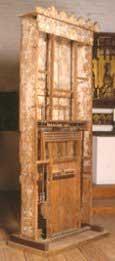
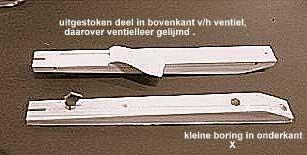
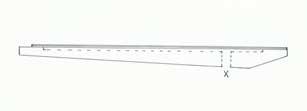
When the space under the pallet leather fills with wind, teh pallet makes an absolutely tight seal against the channel (see the figure on the right). This has great advantages with respect to the attack and decay of the pipe's speech. This principal was already being applied during organ building in the gothic period of the 14th century. On the left you can see an image the organ in Norrlanda Sweden where this type of pallet construction was already being used.


